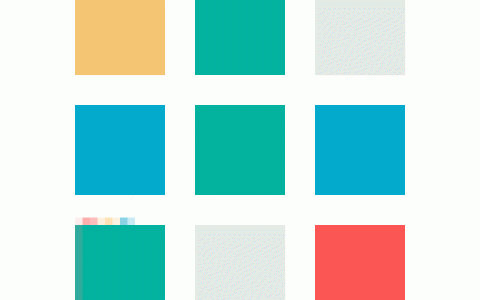居中对齐的几种方法
看面试题,自己总结了下,顺便写了对应例子,加深印象。
水平居中
给 div设置一个宽度,再添加 margin: 0 auto
必须要添加宽度,只对块级元素有效
<style>
.container {
width: 400px;
height: 400px;
background-color: pink;
color: #fff;
}
.box {
width: 100px;
height: 100px;
background-color: purple;
margin: 0 auto;
}
.inline-block-box {
display: inline-block;
width: 100px;
height: 100px;
background-color: purple;
margin: 0 auto;
}
</style>
<div class="container">
<div class="box">块级元素</div>
<span class="inline-block-box">行内块元素</span>
<br>
<span>行内元素</span>
</div>

给父元素添加 text-aligin: center
只对行内块元素、行内元素有效
.container {
width: 400px;
height: 400px;
background-color: pink;
color: #fff;
text-align: center;
}
.box {
width: 100px;
height: 100px;
background-color: purple;
}
.inline-block-box {
display: inline-block;
width: 100px;
height: 100px;
background-color: purple;
}
span {
background-color: skyblue;
}

水平垂直居中
计算法
父元素跟着子元素margin-top移动问题
开始之前,先看下一个小问题
下面的例子中,我们想要让子元素离父元素有距离
<style>
.container {
width: 600px;
height: 400px;
background-color: pink;
color: #fff;
}
.box {
width: 100px;
height: 100px;
background-color: purple;
margin: 150px auto;
}
</style>
<div class="container">
<div class="box"></div>
</div>

结果,子元素并没有外边距效果,反而是父元素出现了外边距的效果。
这是因为,根据规范,父元素的子元素的上边距( margin-top),如果碰不到有效的 border或者 padding,就会一层一层的找自己的祖先元素,直到找到祖先元素有有效的 border或border为止
解决方案:
-
给父元素添加 padding-top -
给父元素添加 border-top -
给父元素添加 overflow: hidden(推荐)
.container {
width: 600px;
height: 400px;
background-color: pink;
color: #fff;
/* padding-top: 1px; */
/* border-top: 1px solid transparent; */
overflow: hidden;
}
开始
首先 margin左右可以直接设置 auto实现居中,但是的上下不行。
计算法:margin上下值 = (父元素高度-子元素高度)/2
在这个例子中,父元素的高度为 400px,子元素的高度为 100px,所以 margin上下值设置为 150px
.container {
width: 600px;
height: 400px;
background-color: pink;
color: #fff;
overflow: hidden;
}
.box {
width: 100px;
height: 100px;
background-color: purple;
margin: 150px auto;
}

绝对定位四0法
设置四个方向都为0,然后设置 margin为 auto,因为宽高固定,所以对应方向平分,可以实现水平垂直居中
.container {
position: relative;
width: 600px;
height: 400px;
background-color: pink;
color: #fff;
}
.box {
position: absolute;
width: 200px;
height: 100px;
top: 0;
right: 0;
bottom: 0;
left: 0;
margin: auto;
background-color: purple;
}
绝对定位 + 计算法( margin负值)
.container {
position: relative;
width: 600px;
height: 400px;
background-color: pink;
color: #fff;
}
.box {
position: absolute;
width: 200px;
height: 100px;
top: 50%;
left: 50%;
margin: -50px 0 0 -100px;
/* margin-top、margin-left 分别是该子元素高宽的一半(负值)*/
background-color: purple;
}
绝对定位 + transform
.container {
position: relative;
width: 600px;
height: 400px;
background-color: pink;
color: #fff;
}
.box {
position: absolute;
width: 200px;
height: 100px;
top: 50%;
left: 50%;
transform: translate(-50%, -50%);
background-color: purple;
}
flex布局法
.container {
display: flex;
width: 600px;
height: 400px;
background-color: pink;
/* 垂直居中 */
align-items: center;
/* 水平居中 */
justify-content: center;
}
.box {
width: 200px;
height: 100px;
background-color: purple;
}
对于宽高不定的元素,后面两种方法(绝对定位+ transform、 flex布局法),可以实现元素的水平垂直居中。
参考资料:
-
104道 CSS 面试题,助你查漏补缺
-
父盒子跟随子盒子margin-top移动问题
原文始发于微信公众号(赤蓝紫):居中对齐的几种方法
版权声明:本文内容由互联网用户自发贡献,该文观点仅代表作者本人。本站仅提供信息存储空间服务,不拥有所有权,不承担相关法律责任。如发现本站有涉嫌侵权/违法违规的内容, 请发送邮件至 举报,一经查实,本站将立刻删除。
文章由极客之音整理,本文链接:https://www.bmabk.com/index.php/post/45240.html


